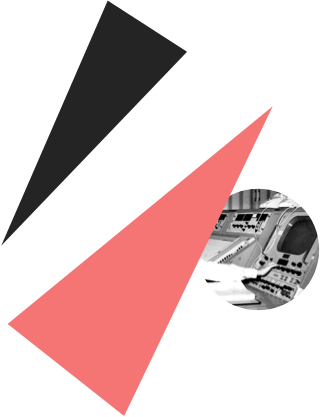Sprint Retrospective ideas for Scrum Masters and Agile Coaches

Table of contents
According to research by Kim Cameron and his coworkers from the University of Michigan, people working in a team that cares about positive values and best practices are more efficient, optimistic, productive, stress-resistant and committed.
Among the factors that drive the quality of work, the study includes mutual assistance, sharing inspirations, kindness, respect, trust and friendliness, as well as joint responsibility, forgiving mistakes and not blaming.
The sprint retrospective, which is held at the end of the sprint, should help your team to optimize their work in the above mentioned areas. I have prepared for you an overview of the best methods that you – as the Scrum Master or Agile Coach - can use to carry out this meeting.
What is the Sprint Retrospective?
The sprint retrospective is a meeting organized after the sprint review. It aims to improve the work of the scrum team during the subsequent sprints. According to the Scrum Guide, written by Jeff Sutherland and Kim Schwaber, the event should take no more than three hours for a one-month sprint. For shorter sprints, it is expected to take less time.
During the sprint retrospective, you can discuss the positive aspects of the work which has been done during the sprint, talk about improvements that should or could be implemented and create a plan in this area.
The effect of the meeting should be to improve the quality of developers’ work and the entire scrum team, and adapt or refine the definition of done, as well as make work more efficient, friendly and satisfying. It is important to emphasize that it also applies equally to the project’s interpersonal relationships as well as the tools used.
The responsibility of the Scrum Master or the Agile Coach is to ensure that the meeting is positive and productive, and the developed solutions will improve work in the following sprints.
The Sprint Retrospective ideas
The 4 Ls
The name of the 4 Ls method is based on four verbs: liked, learned, lacked, and longed for. The authors of this technique encourage facilitators to hang four paper sheets on the wall during the sprint retrospective meeting and ask the team members to spend 3-4 minutes writing down what they liked during the sprint, what they learned, what they lacked for and what their job desires are (or what they miss), using sticky notes to add their feedback to the appropriate sheet of paper.
Following this, the team should be divided into four groups (one for each “L”) and read the notes that have been made. What follows is a discussion about the collected feedback and the possibilities of implementing improvements. The team members should try to understand each other - especially when it comes to the third and fourth Ls.
The authors initially recommended the use of paper sheets and sticky notes, but in the last update of their publication they encourage Scrum Masters and Agile Coaches to try software solutions, enabling the use of this important technique with remote or dispersed teams.
You can try the online tool that Boldare has created – the Sprint Retrospective Tool. Using the 4 Ls method, you can create four columns (one for each L) where all team members write down their ideas and thoughts simultaneously. This tool is simple, free, and easy to use on desktops and mobile devices. It ensures real-time collaboration and allows you to name columns and cards as well as merge, vote and sort the cards.

Esther Derby and Diana Larsen’s method
The method described in the book “Agile Retrospectives: Making Good Teams Great” is based on five steps.
- In the first of them (set the stage) you, as the Scrum Master or the Agile Coach, should prepare for the meeting, explain its purpose, provide team members with the necessary tools and ensure a good atmosphere, for example by choosing a friendly meeting place or asking an introductory question that will involve all gathered.
- In the second step (gather data) you should collect data by asking participants about what went well and what went wrong. It may be helpful to draw a timeline corresponding to the length of the sprint, on which the participants will mark and discuss events that slowed down their work or made it easier.
- The third step (generate insights) should be used to analyze the relationship between the previously indicated events and collected data regarding, among others, team velocity or sprint backlog implementation. Attention should be paid to repeatability, if any, and the reasons for the difficulties encountered. If there are many problems, it may be necessary to focus only on the most significant of them.
- In the fourth step (decide what to do) it is important to make a decision regarding which of the solutions should be implemented during the next sprint. You should set realistic and achievable goals.
- The final step (close the retrospective) is closing the meeting, during which you should ask team members about their conclusions and satisfaction with the sprint retrospective. Participants can also be encouraged to thank each other for their time and collaboration.
“Start, Stop, Continue, Less, More” technique
This technique is very simple and allows the Scrum Master, or the Agile Coach, to conduct the sprint retrospective quickly. The described method is based on answering questions related to five areas:
- Start: What should we start doing that we probably haven’t done yet?
- Stop: What should we stop doing that does not work well or impedes our work?
- Continue: What works well and we want to continue this?
- Less: What should we do less?
- More: What should we do more?
The first step is preparation. The Scrum Master or the Agile Coach running the sprint retrospective prepares posters divided into five parts (Start, Stop, Continue, Less, More).
In the second step, you should explain the rules and explain how the technique works. Then you should give the team time to reflect and discuss (30-60 minutes, depending on the size of the team).
In the third step, which is called “ideology”, you can hand over sticky notes to each person and allow time for the team to record its conclusions (about 10-15 minutes).
Now it’s time for grouping. If many sticky notes contain similar or even identical ideas, team members group them into logical topics. Then the cards are placed on posters or the board. This should last a maximum of 15 minutes. If there are many cards in each group, there should be voting to allow you to prioritize the most important topics of discussion.
Finally, there is the discussion (20-40 minutes is enough). The team should discuss the cards in order of priority or the facilitator can choose cards and set the order of discussion.
You can use our free online Sprint Retrospective Tool which fits this technique perfectly. Create and name the columns, use the voting option and merge similar answers.
“Mad, Sad, Glad” technique
This is an easy to use method for sprint retrospectives. It helps team members identify the things that make people happy, sad or drive them crazy. The technique consists of five steps: preparation, explain the rules, ideology, grouping and discussion.
At the very beginning, the Scrum Master or the Agile Coach prepares posters divided into three areas - Mad, Sad, Glad. Each participant receives sticky notes and records information that:
- drove them crazy: problems, wastes, unwanted surprises, etc.
- made them feel sad: problems between band members, things that didn’t go well, etc.
- made them feel happy: successes, achieved things, anything that makes them smile.
Then the sticky notes are added to the appropriate areas on the posters and the discussion begins.
As in the above case, our Sprint Retrospective Tool will work great here. Create and name the columns, use the voting option and merge similar answers. The real-time collaboration will make your discussion easier, especially when working with a remote and dispersed team.
The Sprint Retrospective questions
Sometimes a well-asked question during a sprint retrospective can trigger a discussion that will be beneficial. The following set of questions will allow you to get information from the team and help you to improve the quality of your work in the next sprint.
- What helps your team to be successful?
- What do you expect from other team members?
- What impediments do you see?
- What did you learn that will increase the quality of your work in the future?
- What caused the problems that you’ve seen in the sprint?
- Why did this work well for you?
- What puzzles you and can’t be understood well?
Summary
These are just a few extremely powerful methods of conducting the sprint retrospective. I hope that you will find among them solutions that will help you - as the Scrum Master and the Agile Coach - increase the effectiveness of the team and achieve the intended results. Please remember that, depending on any problems you see in the team and the current stage of the project, different methods may work better or worse.
We believe that our Sprint Retrospective Tool, which we developed in Boldare and now want to share with the community, will help you in your work and improve your next sprint retrospective. Additional information about this online solution can be found on the dedicated website.
Share this article:














